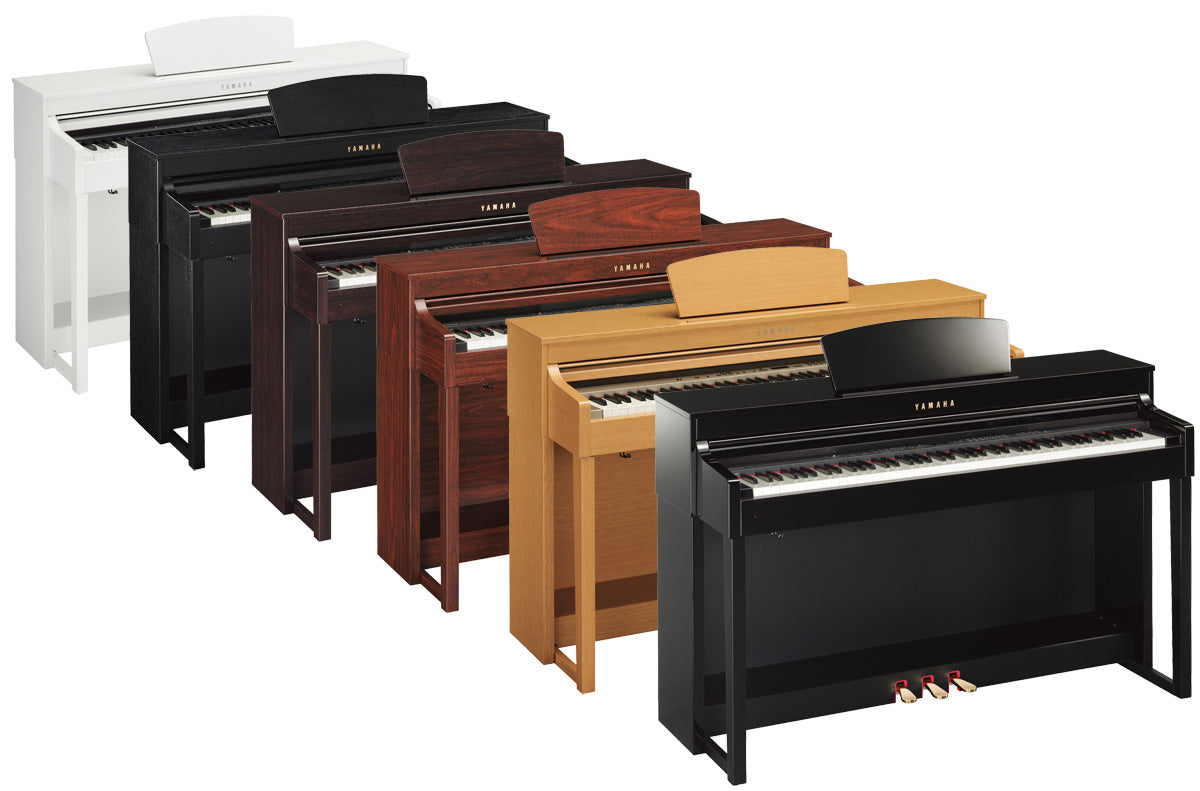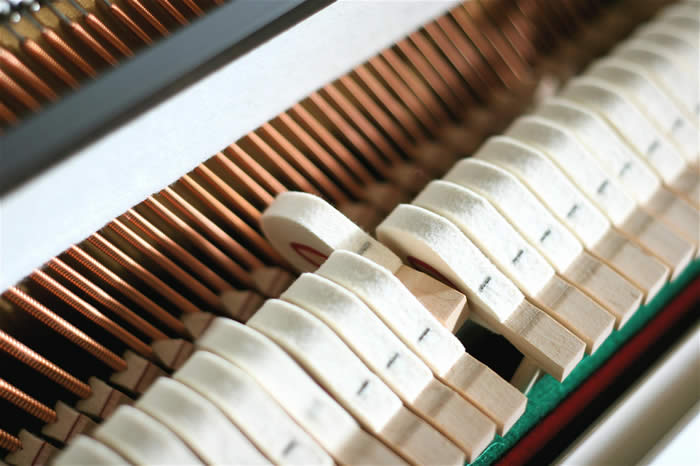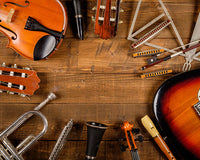Piano has contributed greatly to modern and classical music and it was first created in early 1700s. It has originated from a harpsichord and since has taken on different forms of grand piano, upright piano, digital pianos and finally keyboards and synthesizers as well as hybrid pianos. Piano is one of the most popular instruments and also makes a beautiful piece of furniture that looks great in any home. So here are 10 interesting facts that you may or may not have known about the piano.
1. Tension of the strings
 Pianos usually have around 220-230 strings that are made from steel and strung extremely tight in order to produce a sound when being struck by the hammers. Each string usually holds around 168 pounds of tension, making the total tension of most standard pianos around 18-20 tons. However, some of the largest grand pianos hold up to whopping 30 tons of tension! This is truly incredible and exactly what makes piano tuning such a specialist, intricate job that can only be done by a professional.
Pianos usually have around 220-230 strings that are made from steel and strung extremely tight in order to produce a sound when being struck by the hammers. Each string usually holds around 168 pounds of tension, making the total tension of most standard pianos around 18-20 tons. However, some of the largest grand pianos hold up to whopping 30 tons of tension! This is truly incredible and exactly what makes piano tuning such a specialist, intricate job that can only be done by a professional.
2. Galaxy piano
 The Galaxy Piano was built in the United Arab Emirates by a company called Galaxy Instruments who specializes in crafting extravagant, luxury instruments. There are many pianos that have been turned into works of art, however, this one particularly stood out to me as one of the most unusual looking pianos I have seen. The Galaxy Piano is also among the most expensive pianos in the world as it costs $1.36 million. It is made from 24-carat gold-plated body and features an automatic lid and curved keys that contribute to the design. I am not quite sure how one of these would sound; however, it is probably worth noting that the company tends to classify themselves as luxury item provider rather than an instrument seller.
The Galaxy Piano was built in the United Arab Emirates by a company called Galaxy Instruments who specializes in crafting extravagant, luxury instruments. There are many pianos that have been turned into works of art, however, this one particularly stood out to me as one of the most unusual looking pianos I have seen. The Galaxy Piano is also among the most expensive pianos in the world as it costs $1.36 million. It is made from 24-carat gold-plated body and features an automatic lid and curved keys that contribute to the design. I am not quite sure how one of these would sound; however, it is probably worth noting that the company tends to classify themselves as luxury item provider rather than an instrument seller.
3. The most expensive piano
 Designed by Canadian manufacturer Heintzman Pianos this beautiful instrument was played for the first time in front of an audience at the Beijing 2008 Olympic Games by a Chinese pianist Lang Lang. The piano features a gorgeous transparent design and is called the Crystal Piano. It was later sold at an auction for $3.22 million, making it the most expensive piano in the world.
Designed by Canadian manufacturer Heintzman Pianos this beautiful instrument was played for the first time in front of an audience at the Beijing 2008 Olympic Games by a Chinese pianist Lang Lang. The piano features a gorgeous transparent design and is called the Crystal Piano. It was later sold at an auction for $3.22 million, making it the most expensive piano in the world.
4. The First Piano invented
 This piano was invented in Italy in 1709 by a harpsichord maker Bartolomeo di Francesco Cristofori. His first creation was called gravicèmbalo col piano e forte which, in Italian, means harpsichord with loud and soft. This name was later shortened to 'fortepiano' to then just 'piano'. As you may already know, the harpsichord is only capable of producing sound in certain volume and expression, so having an instrument that is sensitive to touch was a game changer. The first piano invented was so expensive that even average rich families could not afford it. You could predominantly find the instrument in the homes of aristocrats and royalty for nearly a century before it became more accessible to the rest of the public. First piano was of course different in terms of its looks and was not quite perfected as it is today. It wasn't until the 19th Century that these instruments were produced much like the ones you see in the present.
This piano was invented in Italy in 1709 by a harpsichord maker Bartolomeo di Francesco Cristofori. His first creation was called gravicèmbalo col piano e forte which, in Italian, means harpsichord with loud and soft. This name was later shortened to 'fortepiano' to then just 'piano'. As you may already know, the harpsichord is only capable of producing sound in certain volume and expression, so having an instrument that is sensitive to touch was a game changer. The first piano invented was so expensive that even average rich families could not afford it. You could predominantly find the instrument in the homes of aristocrats and royalty for nearly a century before it became more accessible to the rest of the public. First piano was of course different in terms of its looks and was not quite perfected as it is today. It wasn't until the 19th Century that these instruments were produced much like the ones you see in the present.
5. When the Digital Pianos came along
 Although an acoustic piano has been around since 1700s, a digital piano was not brought to the market until 1980! The quest for an electronic instrument, however, had begun in the 1920s and, around 30 years later, the electric piano was born. It was an acoustic instrument with a pick up that would let you amplify it and quickly gained huge popularity - the electric piano was used by famous musicians such as Ray Charles and Duke Ellington. Then, in 1960s synthesizer appeared, which then influenced many genres of music thereafter. Finally, in the 1980s, the modern digital piano was introduced as we know it today! This opened a whole world of possibilities and also solved a lot of disadvantages of acoustic pianos, allowing musicians to practice silently, amplify the instrument, save space and tuning costs.
Although an acoustic piano has been around since 1700s, a digital piano was not brought to the market until 1980! The quest for an electronic instrument, however, had begun in the 1920s and, around 30 years later, the electric piano was born. It was an acoustic instrument with a pick up that would let you amplify it and quickly gained huge popularity - the electric piano was used by famous musicians such as Ray Charles and Duke Ellington. Then, in 1960s synthesizer appeared, which then influenced many genres of music thereafter. Finally, in the 1980s, the modern digital piano was introduced as we know it today! This opened a whole world of possibilities and also solved a lot of disadvantages of acoustic pianos, allowing musicians to practice silently, amplify the instrument, save space and tuning costs.
6. World's Largest Piano
 The record for the largest piano ever made is held by Adrian Mann, a piano tuner from New Zealand. It took him 4 years to build the piano and this grandiose instrument weighs 1.4 tonnes and is 5.7 metres long - a tremendous achievement for a guy who was just 25 years old when he finished working on his piano.
The record for the largest piano ever made is held by Adrian Mann, a piano tuner from New Zealand. It took him 4 years to build the piano and this grandiose instrument weighs 1.4 tonnes and is 5.7 metres long - a tremendous achievement for a guy who was just 25 years old when he finished working on his piano.
7. How often should you tune your piano?
 A new piano should be tuned four times a year and you can then move on to twice a year thereafter. Pianos also tend to stay in tune much better when they are not kept in overly damp or dry environments. Digital pianos do not need tuning; however, improper care may cause the sound to warp.
A new piano should be tuned four times a year and you can then move on to twice a year thereafter. Pianos also tend to stay in tune much better when they are not kept in overly damp or dry environments. Digital pianos do not need tuning; however, improper care may cause the sound to warp.
8. Is piano a percussion or string instrument?
 This often sparks up discussion among musicians and it may come as a surprise to some that piano is considered a percussion instrument. Although it features strings throughout, the sound is produced by the hammers hitting the strings, therefore, the piano has landed itself a place among percussion section within a symphony orchestra.
This often sparks up discussion among musicians and it may come as a surprise to some that piano is considered a percussion instrument. Although it features strings throughout, the sound is produced by the hammers hitting the strings, therefore, the piano has landed itself a place among percussion section within a symphony orchestra.
9. Upright piano is slower than a grand
 It may be unnoticeable to some pianists; however, the action on a grand piano is faster than the one on an upright, allowing you to play much faster. This is because a grand piano has a repetition lever, allowing the musician to repeat the notes when the key is only half way up. On an upright, vertical action requires the key to go all the way up to reset it.
It may be unnoticeable to some pianists; however, the action on a grand piano is faster than the one on an upright, allowing you to play much faster. This is because a grand piano has a repetition lever, allowing the musician to repeat the notes when the key is only half way up. On an upright, vertical action requires the key to go all the way up to reset it.
10. 'King of the Musical Instruments'
 The piano is called the King of Musical Instruments and, while I'm sure you will agree it is one of the best instruments you could play, there are a number of reasons behind it. The piano has the widest range of tones extending lower than a 16 foot pedal note on an organ and higher than the top note of a piccolo. Plus, it is one of the few instruments that can play accompaniment and melody at the same time, making it a complete, independent instrument. All of this in addition to the impressive size of the piano has truly earned it this title. And if that isn't a good enough reason to learn the piano, I don't know what is!
The piano is called the King of Musical Instruments and, while I'm sure you will agree it is one of the best instruments you could play, there are a number of reasons behind it. The piano has the widest range of tones extending lower than a 16 foot pedal note on an organ and higher than the top note of a piccolo. Plus, it is one of the few instruments that can play accompaniment and melody at the same time, making it a complete, independent instrument. All of this in addition to the impressive size of the piano has truly earned it this title. And if that isn't a good enough reason to learn the piano, I don't know what is!




















